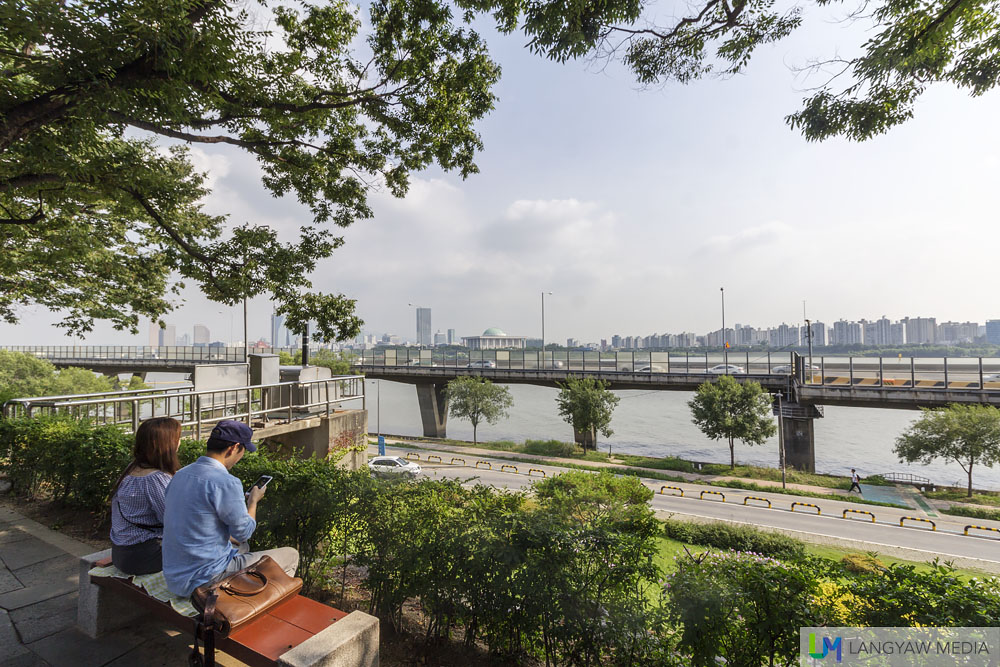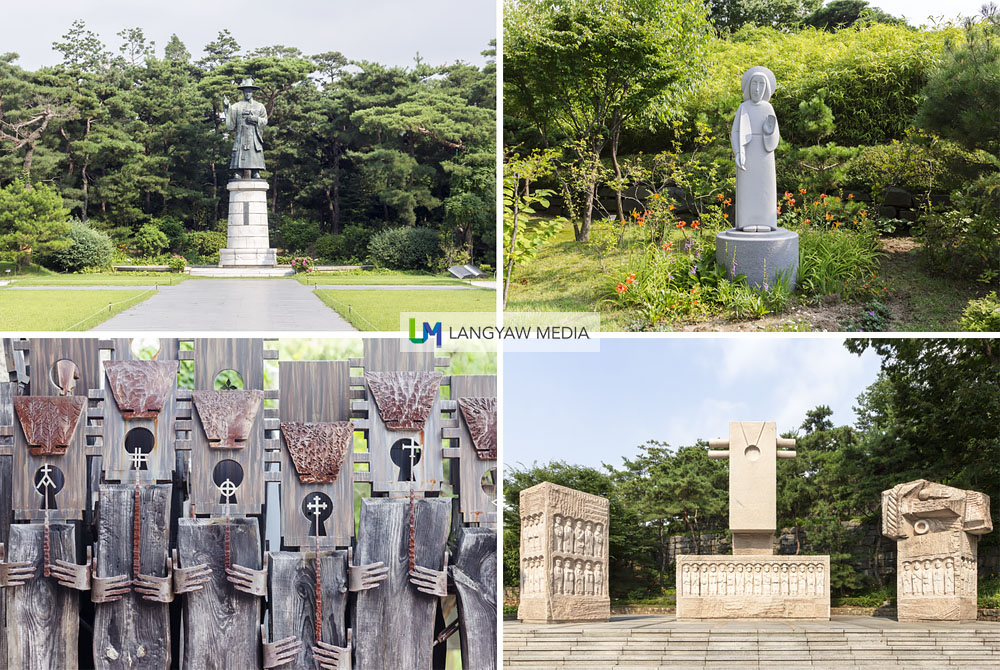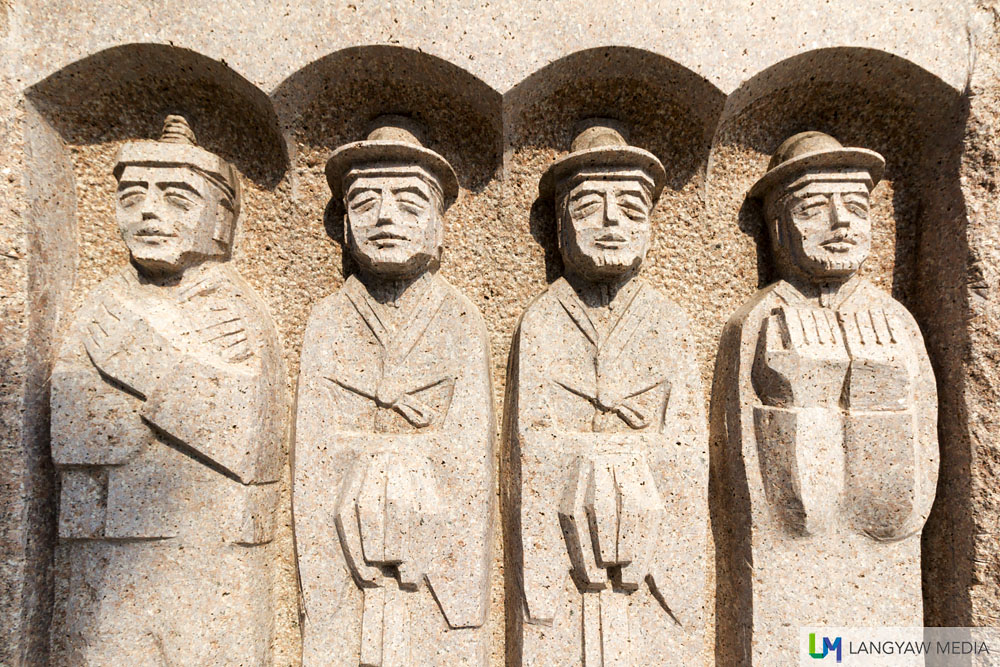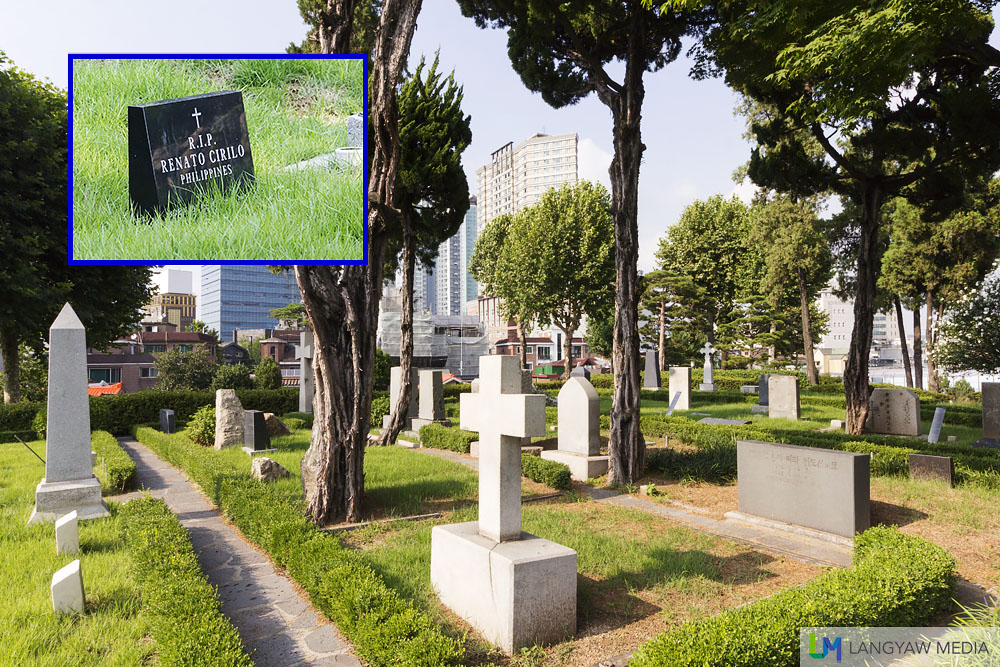The breeze was cool and comforting, as I gazed down the Han River, enjoying a quite afternoon in Jeoldu-san. The promontory has great views of this part of Mapo-gu, in Seoul. The trees provided a much needed shade, rustling gently while the sound of birds and vehicles passing the motorway merged. Although serene and peaceful, Jeoldu-san has a dark history, going back to the 19th century when Catholics were being persecuted. In fact, Jeoldu-san, literally means beheading mountain, when it was used in the 1860s to execute Catholic Koreans during the regency of Heungseon Heonui Daewonwang, better known as The Daewongun (Prince of the Great Court) during the rule of the Joseon Dynasty. he was known for his isolationist policy: “no treaties, no trade, no Catholics, no West, and no Japan.” And this was the reason that blood flowed and covered this hill.
Today, it’s a great place to commune with nature and take a break from frenetic Seoul. It’s expansive gardens and lonely benches, its well cemented paths leading you around is a haven for quiet and serenity. At the top of the hill is the Jeoldu-san Martyr’s Shrine and Museum where the Catholic mass is also celebrated at the chapel. But I like the view of the Han River beyond the hill, gazing there while sitting at the cement bench under the trees. A few meters down the hill is a memorial to the Byeonin Persecution of 1866, marked with sculptured stones atop a flight of steps. Here, Pope John Paul visited in 1984.
But Jeoldu-san is not just about the shrine. Adjacent is the remnant of the Yanghwajin Military Base built in 1754 to guard the capital city by guarding the Hangang Waterway. It’s only the stone foundations that are left on the site, now converted into a park. The name Yanghwajin literally means willow flower ferry dock and refers to an important and strategic transportation point during the Joseon Dynasty.
Several meters from the base ruins is the Yanghwajin Foreign Missionary Cemetery, established in the 1890s at the request of the Americans who asked for a burial site for missionaries. Today, several missionaries and their families who evangelized during the late 19th century up to the end of the Japanese Invasion are interred here. American soldiers who helped in the liberation of Korea from the Japanese are also buried here.
Yanghwajin and Jeoldu-san is not as popular tourist sites compared to the traditional palaces and villages in Seoul but its also a good place, especially for Christian Koreans to reflect and have a deeper understanding of the history of the Christian faith in this part of Asia. Other than that, I did enjoy the peace and quiet as well as the cool breeze and views afforded.







Where the blood of martyrs flowed at #Seoul’s beheading mountain #southkorea #sokor #cemetery… https://t.co/FFNmgAFana
Peace & serenity in Jeoldu-san, Seoul’s beheading mountain – langyaw https://t.co/FdT6pUcXwU
You Won’t Believe How Much This Site in Korea has Changed Over the Years! https://t.co/nR7vTdEWrG